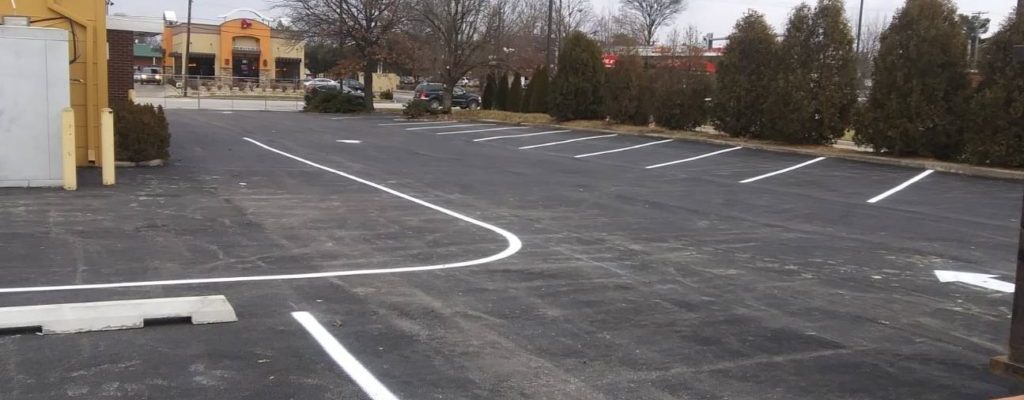- 0 Like
- 0 Comments
- By admin
- Asphalt Patching, Asphalt Paving
Asphalt is constantly bombarded with UV rays, water and expanding and contracting ice during the winter months. Over time, the combined attacks of water, oxidation and thermal fluctuation cause the asphalt surface to dry, grow brittle, and break down. Tiny cracks form in the dried surface, which loosen the aggregate and let water in. Oil leaks from cars often accelerate this deterioration. Without regular crack filing and sealcoating maintenance, what is left after a few years is a dry, gray surface riddled with cracks and potholes. Having an effective parking lot asphalt maintenance plan is crucial for keeping a compliant and safe parking lot. Repaving is the only decision for driveways or parking lots that have severe deterioration, deep wide cracks, subsided depressions and numerous potholes.
Overlay
An asphalt overlay consists of a compacted layer of one-and-a-half to two inches of hot mix asphalt being placed over the existing asphalt, essentially giving the driveway a new surface. Just as with sealcoating, the first task is repair of existing pavement. Areas where the pavement surface has slumped indicate failure of the stone foundation supporting the pavement. These areas require digging out existing asphalt, and repair and compaction of the stone base with new material before patching with asphalt mix to prevent trouble spots from returning after repaving. Then an overlay is placed over the old surface. No sealcoating should be added for six months to a year, just as with any newly constructed pavement.
Regular Maintenance
While an asphalt overlay can begin to deteriorate within five to six years without maintenance, it could last up to 25 years with regular upkeep. The upside to installing an overlay is the pavement has a renewed wearing course, providing a pliable, flexible surface. Also after the overlay, the maintenance program can start over, lending to a virtually brand new drive or lot. However, extreme weather, heavy loads, and shortcuts during construction could lead to premature wear and failure. The downside of repaving is that it is expensive (typically thousands of dollars more than sealing). Plus, if the original asphalt isn’t properly cleaned and prepared, cracks and uneven sections may return, as well as other problems that may not have previously existed such as delamination of the overlay because of poor adhesion to the old pavement.
The industrial and commercial asphalt world is always changing. Please like this article, share this article, or visit us at https://arnoldasphalt.com.

